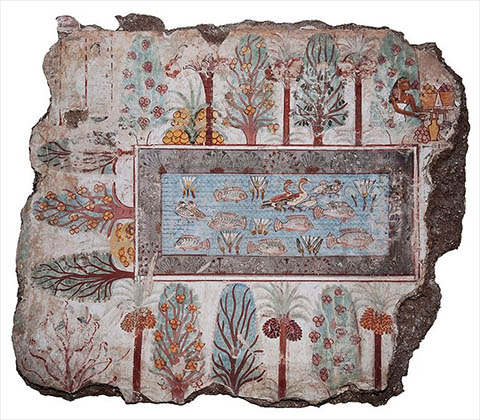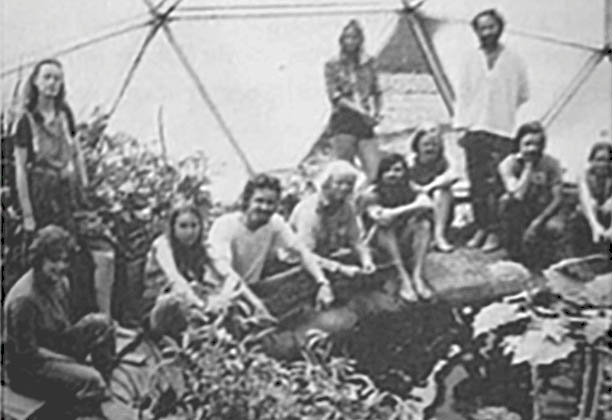Timeline
- Ancient Egyptians.

The first known evidence of it comes from. In a wall scene from the tomb of Wahtye, an Egyptian nobleman from around 2500 BCE, fish are shown swimming in a plant-filled basin. Or tomb of Nebamun. Those scene suggests that the ancient Egyptians were familiar with the concept of aquaponics and were using it to raise fish. Also, the Nile River was used for irrigation and waste management using the same system used for aquaponics today.
- Eastern Asia, over 2,000 years ago. Rice and Fish farm.

- CHINAMPAS ( (chuh·naam·puhz). Aztecs in Mexico (Prehispanic).

- Leonard Pampel was the first person known to have used plants to treat wastewater. His experiment was conducted in the aviary building at the Milwaukee County Zoo. Mr. Pampel obtained a patent for that system, and was assisted by a young high school student named James Rakocy who helped him design integrated aquarium systems, later providing his discoveries to James for his doctoral thesis at the University of Auburn.
- There were articles on aquaponics in the Transactions of the American Fisheries Society in the late 1970s by William Lewis and his students at Southern Illinois University in Carbondale.
- New Alchemy Institute. It was a research center that conducted pioneering research in organic agriculture, aquaculture, and biological refuge design. It was founded by John Todd, Nancy Jack Todd, and William McLarney. Its purpose was to investigate human support systems of food, water, and shelter and to completely rethink how these systems were designed.

Conclusion
The concept of farming fish and plants in a symbiotic relationship has been around for a long time. It is from the 70's when the modern methods and techniques were created when the productive model of fish and plants called aquaponics was created.

